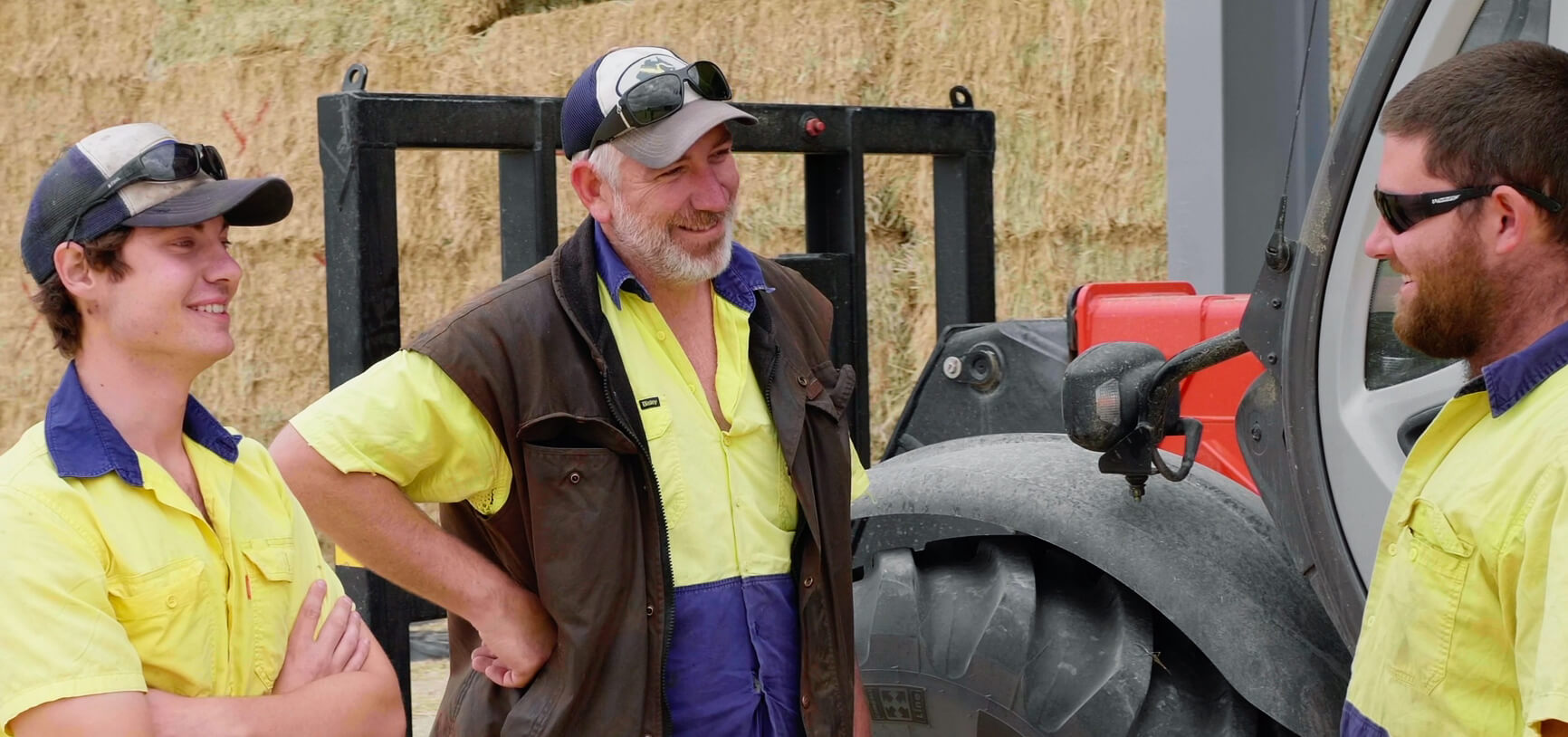New to farm safety and not sure where to start? We've got a guide made just for you.
Sharing our experiences is a common reality of human existence. Not only do we like to talk about what has happened to us, we like to listen to how other people have reacted in similar situations. Sharing our farm safety experiences should be no different. Just as everyone has a different approach to certain tasks, so too can we learn about ways to improve our on-farm health and safety by hearing of other's methods.
Workplaces around Australia, New Zealand, United States, Canada and the United Kingdom (UK) are encouraged to commit to improving safety in their workplaces and share their successes with colleagues, neighbours and mates. A lesson learned can change practices for more than just your workplace and help improve the overall safety of the agricultural industry.
With constantly changing technology, innovation and legislation meaning workplace responsibilities are also changing, it is now more important than ever to ensure farm safety is a part of our everyday routines. As employers, we need to give workers the time and training to stay in control, empowering everyone to create a safe workplace this includes understanding WHS/OHS/Health and Safety requirements.
What happens when you don’t take safety seriously?
According to the Australian Workers’ Compensation Statistics, Agriculture, Forestry and Fishing has the highest frequency rate of serious claims in any industry between 2019 – 20. Reaching 9.6 serious claims per million hours worked, compared to the Australian average of 6.1 frequency rate per million hours worked.
The agricultural industry accounts for 75% of all serious claims in 2019 – 20, peaking at 16.9 serious claims per 1,000 workers. Of these serious claims musculoskeletal disorders were the most frequent, with men representing 2,044 serious claims to compared to women at 874. 2,759 of all claims were related to injuries and musculoskeletal disorders.
In 2018, incidents involving vehicles made up the largest majority of fatalities (25%) in agriculture. This was closely followed by non-road vehicle rollovers (16%). The majority of serious claims were caused by being hit by an animal, muscular stress while handling objects and falls from a height or on the same level.
In Australia the median compensation for workplace injuries in 2018 – 19 was $8,200 compared to $7,200 for agriculture. 24% of all serious claims were Labourers, with Machinery operators and drivers at 14% and Technicians and trades workers at 19%.

What can we do to keep safe on farm?
1. Talk about safety
Improvements are best made when everyone at your workplace is invested in them. Even small changes such as reminders to wear the correct personal protective equipment (PPE) for the job or regular refreshers on seasonal safety issues such as working in heat or fatigue management can prompt workers to keep safety front of mind.
2. Conduct workplace inspection
Use workplace inspections to determine what could potentially cause harm and split inspections into categories such as machinery, yard areas, the workshop and food production areas.
3. Plan for safety
Safety meetings can help improve communication and foster good relationships within any business and in some states are a requirement under workplace health and safety regulations.
As an employer, use regular team meetings to ask direct questions or provide topics for discussion, rather than simply asking if anyone has any safety issues of concern. This is more likely to prompt engagement and may lead to other safety areas being considered also.
4. Think outside the box
You often need to look outside the traditional avenues to come up with effective solutions to safety issues. In terms of agriculture the most logical solution isn't always realistic. For example, in busy times, fatigue is a factor but so is lost time. Creating a break covering system across the operation can ensure things are always moving.
If you find that your farm workers aren't committed to following the safety processes you have in place, find out why this is. Then look for an innovative way to remedy the issue. Use your networks to discuss your safety issues on farm and look to practices employed at your neighbour's place, the local silo, or dairy or meat processing plant and develop your safety plan with tried and tested methods.
Be sure you are allowing enough time for workplace safety. Are messages of productivity causing undue pressure or preventing workers from performing vital machinery checks due to the job urgency? Listen and change practices to align business needs with worker needs.
5. Learn from mistakes
Be willing to admit your mistakes and if your safety initiatives fail, consider why this happened so you can improve next time. Effective workplace health and safety management needs flexibility and collaboration.
Topics: Safety Management System
Disclaimer: Content on this website may be of relevance to users outside of Australia, but content links and examples are specific to Australia. Please check with your local authority for your country and industry requirements.












